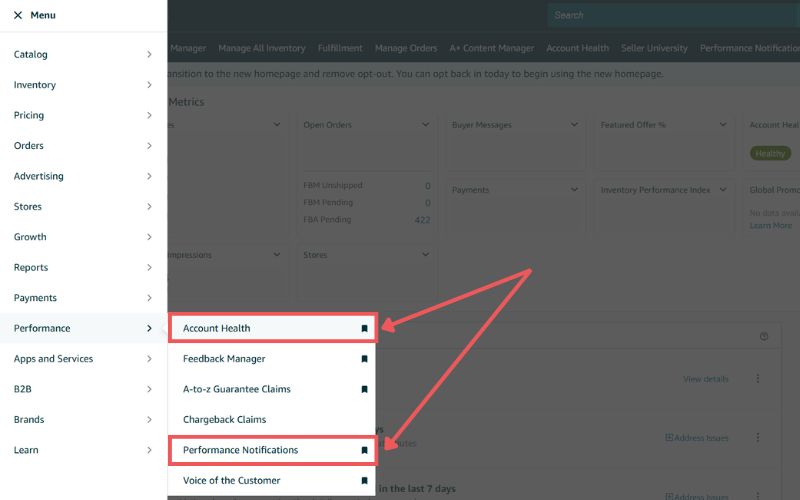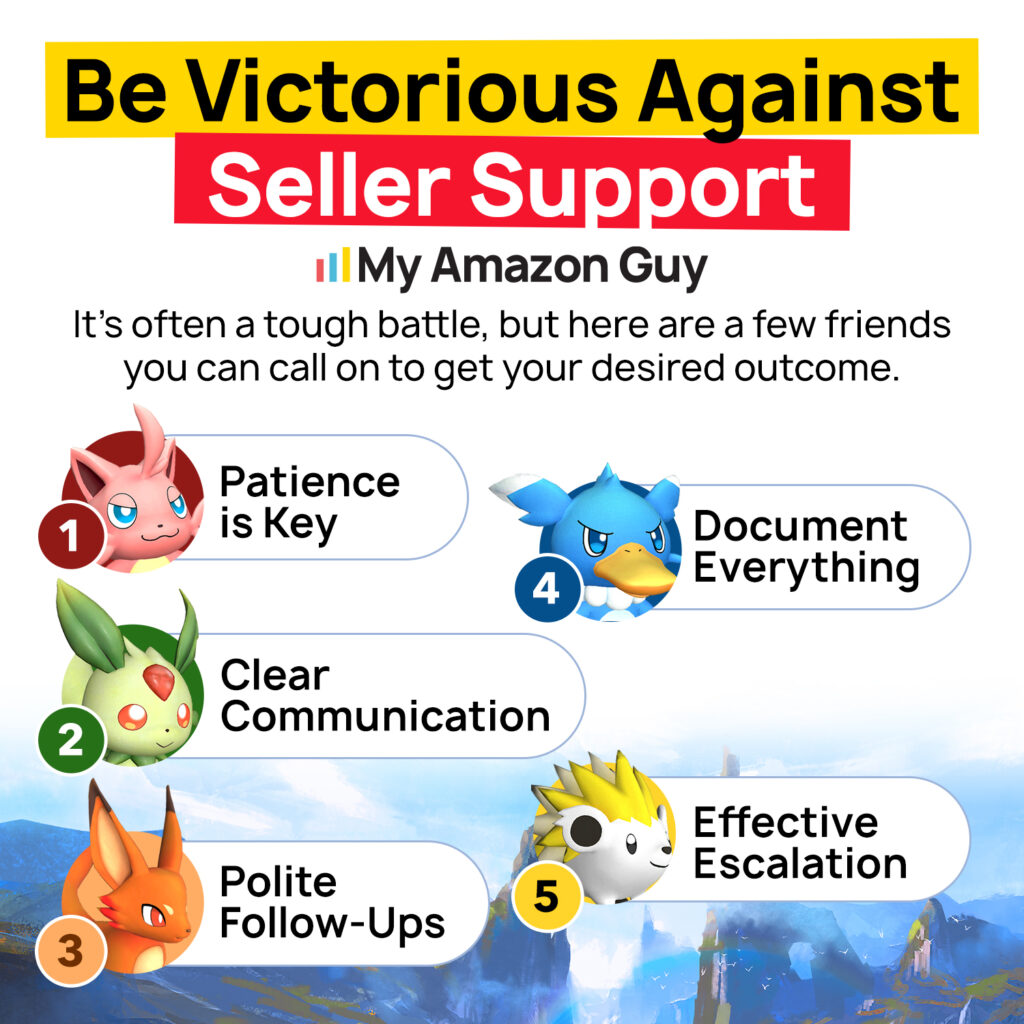Last Updated: May 22, 2025
Imagine logging in to your Seller Central account only to be bombarded with red-flag notifications about Amazon compliance issues. Who wouldn’t panic, right?
One wrong move, like an outdated document or a mislabeled product, can trigger suppressed listings or even a full-blown account suspension. It’s frustrating, stressful, and can derail your entire operation if you’re not ready for it.
That’s why understanding Amazon compliance issues is so important. When you know what to watch out for and how to respond, you stay in control and keep your account healthy.
Our Amazon agency built this guide to walk you through what to do when Amazon compliance issues arise. Whether you’re a seasoned seller or scaling fast, this article will help protect your listings and brand.
Table of Contents
Understanding Amazon Compliance Issues
As an Amazon seller, it’s essential to understand the compliance issues that have been raised by Amazon. These notices typically appear in your Seller Central dashboard, under the Account Health or Performance Notifications, or you might get an email alert directly from Amazon.
When these issues pop up, Amazon may remove your product listings or suspend your account. That’s a nightmare for any seller, especially when it means lost sales, damaged reputation, and wasted inventory sitting idle.
How to Stay Compliant on Amazon
It’s important to address compliance issues as soon as possible to avoid potential consequences. However, preventing them from happening in the first place is even better, so here are some steps you can take to stay compliant on Amazon:
- Research Compliance Regulations
Research the compliance regulations for your product to ensure that you’re meeting all the necessary requirements. This will involve researching regulations at both the federal and state levels. - Understand Your Product
Know exactly how your product is used and who it’s for. If it could be used by children under 12, testing and certification may be required. - Get Required Testing Done
Don’t skip lab testing to save time or money, since it can cost you your listing. Use accredited labs that provide clear documentation that Amazon accepts. - Maintain Accurate Product Listings
Make sure your titles, bullet points, and backend attributes are accurate and match what’s in the packaging. Misleading listings are one of the fastest ways to trigger compliance flags. - Upload All Required Documentation
Amazon often asks for safety data sheets, certificates, or test reports; upload them in advance when possible. Keeping this documentation updated can prevent issues from popping up later. - Avoid Unverified Claims
Only include claims that are backed by reliable data and documentation. Avoid phrases like “FDA approved” unless you can prove it. - Check Amazon’s Restricted Products List
Before listing anything new, make sure it’s not in a category that requires approval or extra compliance. This quick step can save you a massive headache down the road.
Steps to Take When You Get an Amazon Compliance Issue
When you receive a compliance issue notice from Amazon, it doesn’t mean it’s the end of the road; you can still take action. Below are the steps you can follow to address the issue and protect your product listing:
Filing an Appeal on Amazon
One of the first steps you can take is to file an appeal with Amazon. An appeal is a request to reconsider the compliance issue and hopefully get it resolved in your favor.
Here are some tips on how to file an effective Amazon appeal:
- Clearly explain the issue and provide any relevant information that supports your case.
- Provide documentation or test reports that prove your product is compliant.
- Be concise in your appeal. Avoid emotional language or blaming Amazon for the issue.
Remember that filing an appeal does not guarantee that the issue will be resolved in your favor. However, it’s an important step to take and shows Amazon that you are actively trying to address the issue.
Keeping Communication Flowing
Quick and clear communication can make the difference between keeping your listing or losing it. Not responding to or ignoring messages from Amazon can result in your product listing being removed or even your account being suspended.
Below are the best practices when communicating with Amazon:
- Respond promptly to any messages or notifications from Amazon.
- Be polite and professional in all communications.
- Provide any requested information or documentation in a timely manner.
- Keep a record of all communications with Amazon in case you need to refer back to them later.
Note that Amazon is a large company with many sellers, so it’s important to be patient when waiting for a response. But if you haven’t received a response after a reasonable amount of time, you can follow up with Amazon to ensure your message was received.
Escalating to jeff@amazon.com
jeff@amazon.com is the public email address of the owner of Amazon: Jeff Bezos. While it’s unlikely that he will personally respond to your email, escalating to this level can sometimes result in your issue being resolved more quickly.
Do the following when you want to escalate to Jeff Bezos:
- Only escalate to jeff@amazon.com after all other channels fail.
- In your email, clearly state the issue and why you are escalating to this level.
- Provide any relevant information or documentation that supports your case.
- Be respectful in your email. Avoid using all caps or emotional language.
Although escalation to Jeff Bezos might seem like a long shot, there have been cases where issues were actually resolved this way. So if you’ve truly exhausted all other options and nothing has worked, it’s worth giving this a try.
General Advice for Handling Amazon Compliance Issues
Each case is different, so there’s no one-size-fits-all strategy when it comes to Amazon compliance. Still, there are best practices you can follow to handle these issues more effectively and reduce risk.
1. Monitor Account Health Like a Hawk
Don’t wait for Amazon to surprise you with a suspension. Check your Account Health dashboard regularly so you can catch Amazon compliance issues early, before they turn into bigger problems.
2. Prioritize Based on Severity
Not all compliance issues are equal. Fix minor listing violations quickly, but if a product gets yanked, prepare a detailed appeal with documentation.
3. Know the Most Common Triggers
Familiarize yourself with issues like intellectual property complaints, authenticity concerns, and listing violations. Understanding the usual suspects helps you stay one step ahead.
4. Act Fast, But Stay Cool
Speed matters when Amazon flags your listing, but don’t panic. If your product is still live but “at risk”, you likely have a window to resolve it without losing the listing.
5. Be Honest and Take Responsibility
If you messed up, own it. Amazon prefers transparency and accountability over excuses; they want to see what you’ll do to make sure it doesn’t happen again.
6. Document Everything
Keep all receipts, invoices, certifications, and communications organized. When it’s time to appeal, having everything in one place saves time and adds credibility. Keep all receipts, invoices, certifications, and communications organized, such as in a combined PDF or a single folder.
7. Appeal Smart, Not Loud
Make your appeal clear, direct, and well-supported. Avoid rants and stick to the facts, explain what happened, and provide proof.
8. Don’t Be Afraid to Call in Experts
If compliance issues keep piling up or you’re not sure how to proceed, it’s okay to ask for help. A full-service Amazon agency that understands Amazon’s system can save you time, money, and your account.
Amazon Compliance Documents Sellers Should Know
When sellers come across compliance issues, Amazon often asks for documentation to prove that the product meets safety and regulatory standards. These documents are important to have on hand, so it’s smart to learn what they are and when you might need them.
1. CPC (Children’s Product Certificate)
Required for products intended for children under 12, a CPC proves that the item complies with all relevant children’s product safety rules. It must include test details, manufacturer/importer information, and contact info for the person maintaining records.
2. GCC (General Certificate of Conformity)
This document is for non-children’s products and confirms they meet applicable safety regulations. It must list the tested product, testing dates, and details about the manufacturer or importer.
3. CPSC-Accepted Test Reports
If your product falls under CPSC oversight, Amazon may require test results from a third-party lab recognized by the CPSC. This confirms the product passed safety standards for items like toys or baby products.
4. ISO 17025 Accredited Lab Reports
For some categories, test results must come from a lab accredited under ISO 17025 standards. These reports need to show a match between the tested product and the ASIN listed, along with detailed product specs and images.
5. NRTL Certification Documents
For certain products, you can submit certification from a Nationally Recognized Testing Laboratory instead of ISO 17025 reports. This includes a Certificate of Compliance or a Marking Authorization Letter with product details and safety standard references.
6. Compliance Markings
Amazon may request proof of required compliance markings like CE, FCC, or tracking labels. Sellers must provide clear images showing that these markings are present and properly applied to the product.
7. Product Instructions and Manuals
These must include safety information, warnings, and any regulatory markings. If Amazon requests them, sellers need to submit complete manuals that align with what’s in the product packaging.
8. Registration Cards
For products like cribs or car seats, registration cards are required and must include the brand’s contact information, model, and manufacturing date. Only physical cards (not digital) that meet format rules are accepted.
9. Tracking Labels
Children’s products must have tracking labels with the manufacturer’s name, production date, and location details. These must be permanently attached and visible on both the product and packaging.
FAQs About Amazon Compliance Issues
What are Amazon compliance documents?
These are official records, like safety certificates, test reports, and regulatory approvals, that prove your product meets Amazon’s legal and safety requirements.
Does Amazon ask for compliance documents?
Yes, to ensure the products sold on the platform are safe, legal, and meet regulatory standards. It protects customers and keeps Amazon compliant with laws in different countries.
What is the Manage Your Compliance dashboard?
It's a section in Seller Central where Amazon flags listings with compliance issues. You can view document requests, upload files, and fix problems directly from there.
Ensure Compliance to Protect Your Amazon Business
There comes a time when a seller runs into Amazon compliance issues and sometimes without even realizing it. This guide is here to help you understand what to do so you’re ready when it happens.
But if you’re still unsure how to handle Amazon compliance issues, reach out to our Amazon agency. Let our Amazon experts guide you through the process and protect your business the right way.





